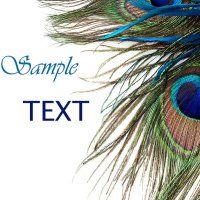The development of better screens with higher resolution and adoption of tablets for reading devices both lead to fonts playing an increasingly important role in how writing and information is displayed. The range of fonts and typefaces that are available can be overwhelming to the uninitiated. Abusing typefaces can also lead to poor reading or sometimes misrepresentation of information. Here are some tips for choosing fonts.
Main Classifications
There are four main categories of font: serifs, sans serifs, decorative typefaces and scripts. Each has it’s own use and misuse, and it is worth understanding each.
Sans Serifs
These are quite common, especially on the Internet. Popular san serifs are Arial, Verdana, Tahoma and Helvetica. They are really easy to visually see in a range of sizes, and are particularly useful for conveying information. However, their minimalism means they lack emotion and connection with the reader.
Serifs
These are fonts with tiny finishing strokes added to the characters. These small flourishes are great for large amounts of text content as the arcs from the finishing strokes visually assist reading the text. They also feel important and have an air of professionalism, making them great for business correspondence. The most common serif font is Times New Roman, but others examples include Georgia and Garamond.
Script and Decorative Fonts
The last two categories are less important as they are not commonly used in day to day text. Script typefaces replicate handwriting or calligraphy. Common script typefaces are Monotype Corsiva and Lucinda Handwriting. They are the masters of invitation correspondence, but little else. They are not used often as they either invoke over formality, or ironic informality.
Decorative fonts are quite unusual and unique looking fonts that are used for design effect or style. They can also invoke a time, place or emotion. They are distracting, so not used for the body of content, and can easily be overused.
Common practices
For most online content, the common practice is to use a sans serif for the body content, while a sans serif is used for headings and titles. Strangely, the opposite practice is used for the printed page.
The reason for this difference is contrasting opinions over the readability of serif typefaces. Studies have shown that readability is increased through the use of serifs. However, other studies suggest that this might be due to what we are used to seeing in print, rather than the nature of the font.
Further styling can be added to the font in order to provide more information about intent and context of the written piece. This can be in the form of bolding or italicising, or adding color.
Improving the delivery of content
Understanding fonts and typefaces can have a useful impact on the delivery of your content. A report which is sent to a client written in the comic sans font is not going to get the same attention as one written in Verdana, regardless of the content.
It is therefore important to understand some of the basics and the merits of each font. That way, the delivery of the content can be re-enforced by how it is presented, right down to the letter.
No related posts.
Related posts brought to you by Yet Another Related Posts Plugin.













Leave Your Response